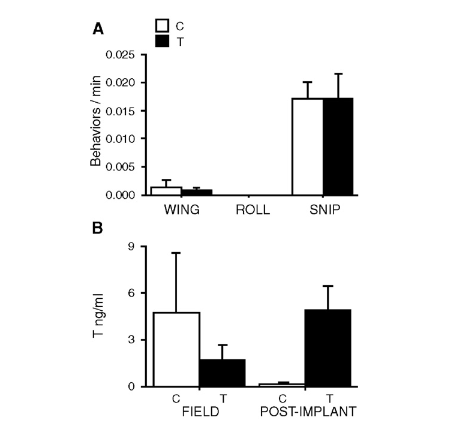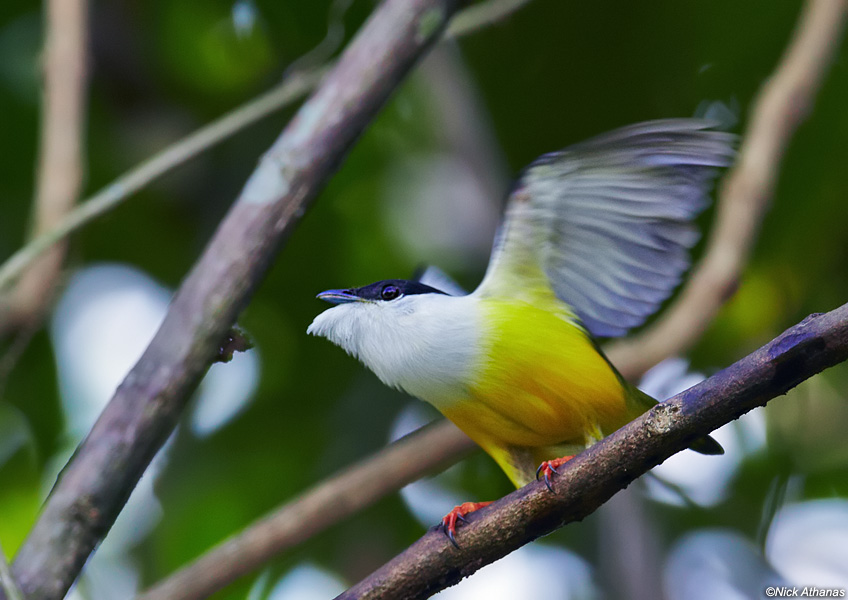Manakin Mating Behaviors
- Biology 342 Fall 2016 -
Erin Howell and Morgan Vague
Mechanism:
The question of ‘Mechanism’ seeks to determine what biological and physiological structures and systems, such as hormonal influence, neuronal activity, and genetic process, underlie a behavior (Ryan, Wilczynski)
Creating Displays
Testosterone is crucial for activating androgen receptors that allow male golden collared manakins to perform optimal courtship displays (Schlinger, 2013), and that exogenous testosterone treatment can activate courtship in adult males during non-courtship seasons (Day, 2006). However, breeding males exhibit highly variable levels of testosterone throughout the courtship season (Day, 2006). Additionally, exogenous doses of testosterone at the middle of the mating season do not increase measured display components of courtship (Day, 2006). It is thus hypothesized that the gonads of golden collared manakin males begin secreting testosterone in late January at the start of the mating season (Day, 2006). In studies of the spinal cords of female and male golden collared manakins, [H] testosterone hormone was found to be much more highly concentrated in the spinal cord motoneurons of male golden collared manakins than females (Shultz, 1999) This suggests [H] testosterone may drive the sexually dimorphic muscle movement of wingsnaps in males.
Muscles involved with lifting and retracting the wing such as the supracoracoideus (SC) and the scapulohumeralis dorsalis (SD) muscles involved in bringing the humerus forward and backward are thought to control the wingsnap mechanism (Schultz, 2001). In situ hybridization studies combined with retrograde motoneuron labelling shows the SD muscle responsible for the wingsnap are innervated by androgen-receptor expressing motoneurons (Schultz, 2001). This suggests that the wingsnap mechanism in male courtship is under the influence of androgen hormone (Schlinger, 2001).

A New Type of Song
During active courtship of a female, male golden-collared manakins extend their yellow throat feathers past their bill, jump up and down the length of their perch or lek area, and flit from branch to branch or branch to forest floor (Chapman, 1935). This dance includes loud acoustic signals termed “wing-snaps” that are produced by the upward flips of the wings, and by the beating of primary and secondary wing feathers together (Chapman, 1935). Primary and secondary wing feathers of males differ significantly from those of females and have curved, heavy and stiffened vanes (Chapman, 1935).
Wingsnaps can occur either in a very loud single snap, a snapping whirr, or a rollsnap that is produced by a rapid series of singular wingsnaps (Bostwick, 2003). Golden collared manakins produce single wingsnaps as they begin jumping to court a female, and they extend their yellow throat feathers by turning in midair to face the female (Schlinger, 2013). Altogether, the entire display sequence lasts roughly 9 seconds (Schlinger, 2013).
